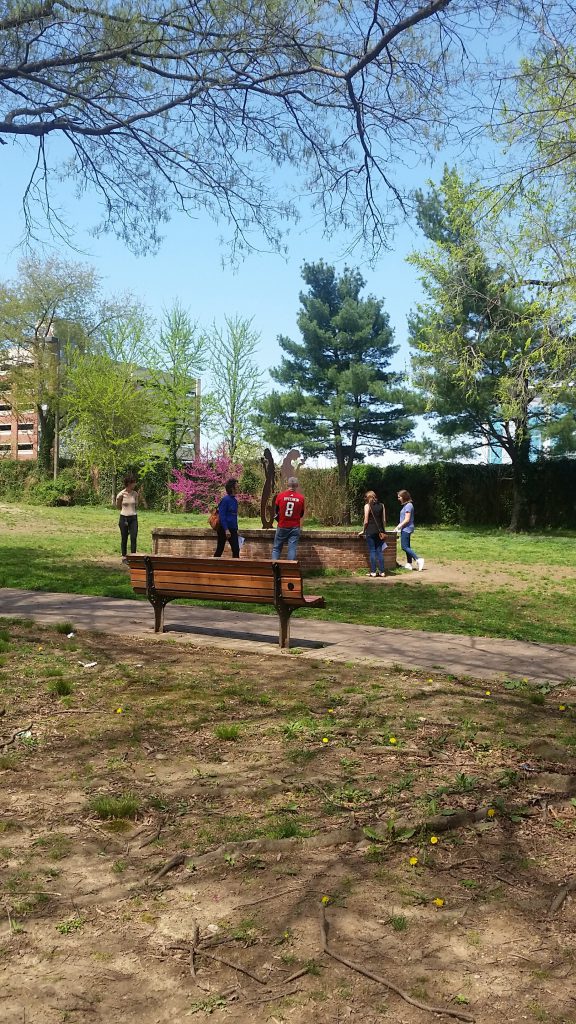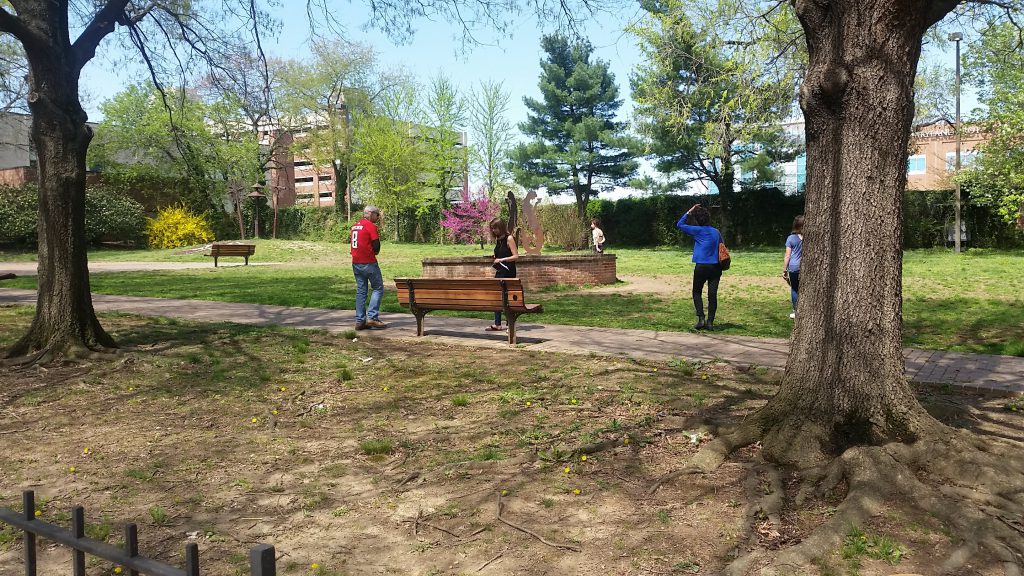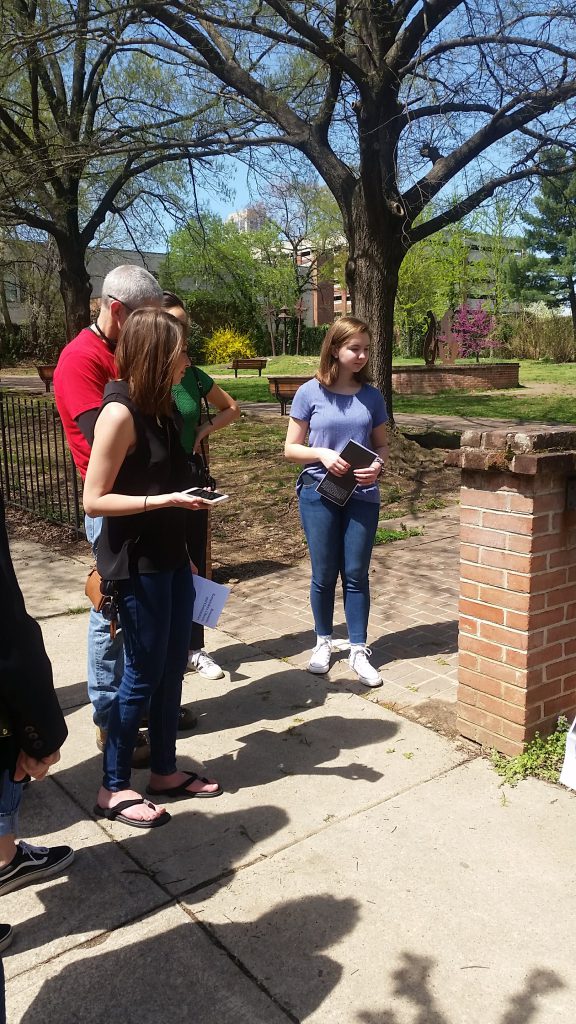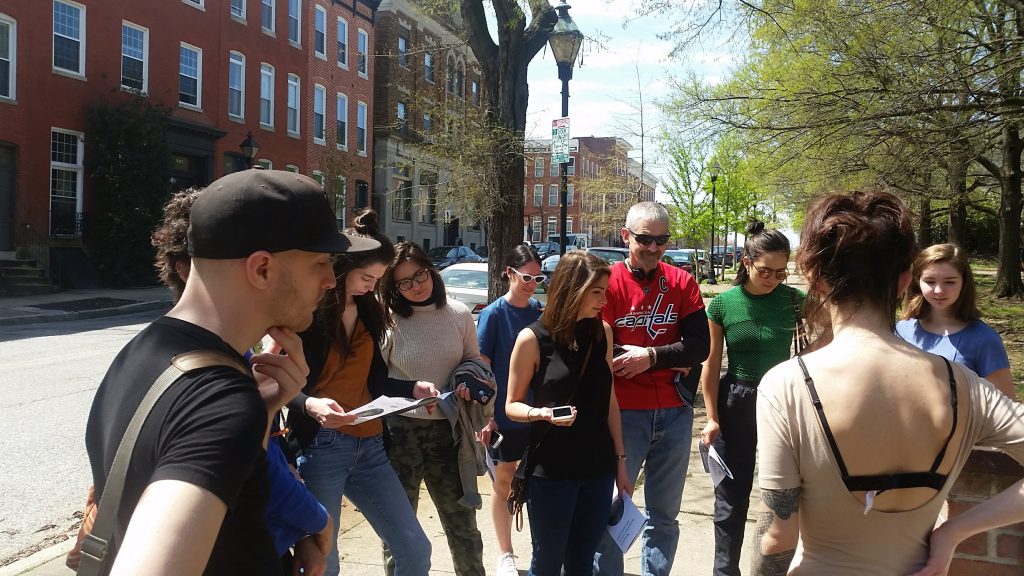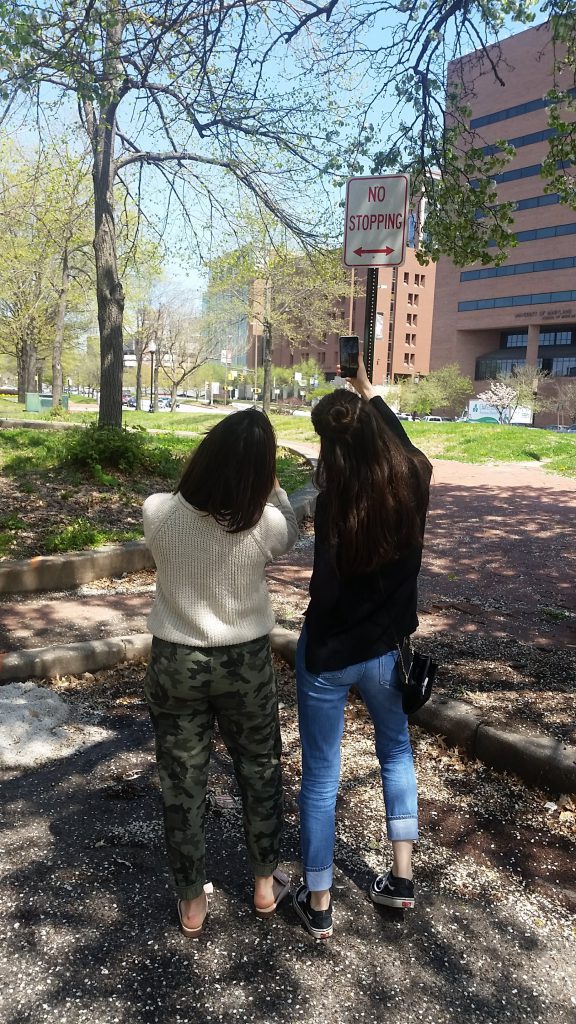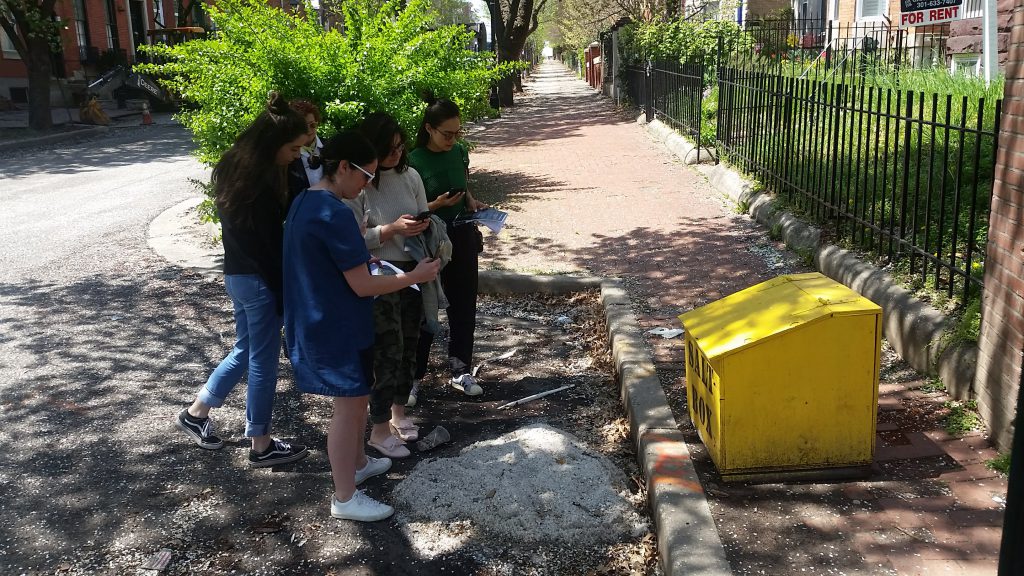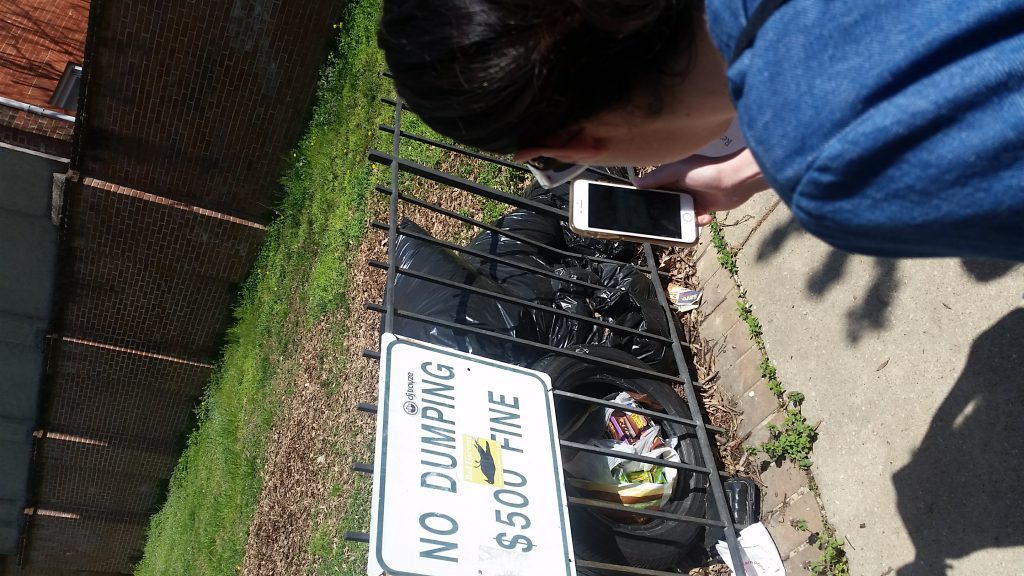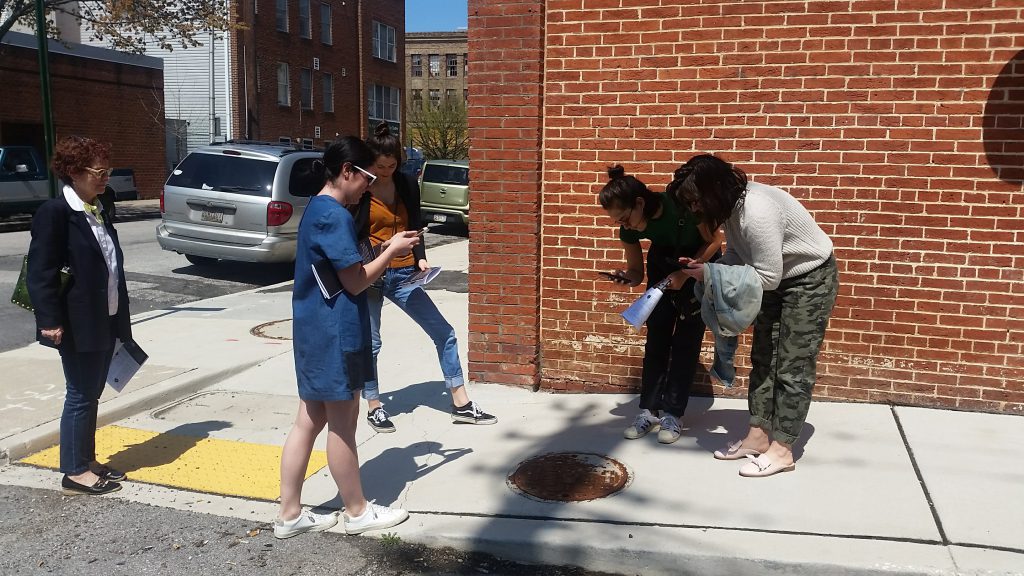Hollins Walking Tour
This work launched on April 13, 2019, at the Lion Brothers Company Building in Hollins Market, Baltimore. The tour itself is a mobile application that uses street signs, water meters, and other city surfaces as markers to cue an audio narrative, spoken in my own voice. With provided headphones and a guidebook, participants were invited to follow a map and instructions to locate each marker and hold their device as if they were taking a picture of it. When the camera recognized the marker, my voice played over their headphones, instructing participants to explore, touch, smell; take actions such as sitting on curbs and collecting objects; and listen to my voice recount human and non-human histories.
The tour has four main sites: Boyd Street, which lies directly alongside the Lions Brothers Building; Little Lithuania Park and Lithuanian Hall, which hold enduring organisms that reveal whispers of an ecological future in the midst of industrial past; Martin Luther King Jr. Boulevard, whose construction in the early 1980s embodied and enforced division between downtown and southwest neighborhoods;[1] and the intersection of Baltimore and Arlington Streets, which was once the site of a tributary that led to the Chesapeake Bay.
[1] For a detailed account of the ways in which the construction of Martin Luther King Jr. Boulevard and other highways enforced the legacy of redlining and segregation, see Tavani Misra, “The Other Side of MLK Boulevard,” City Lab (2018), accessed December 5, 2018.
